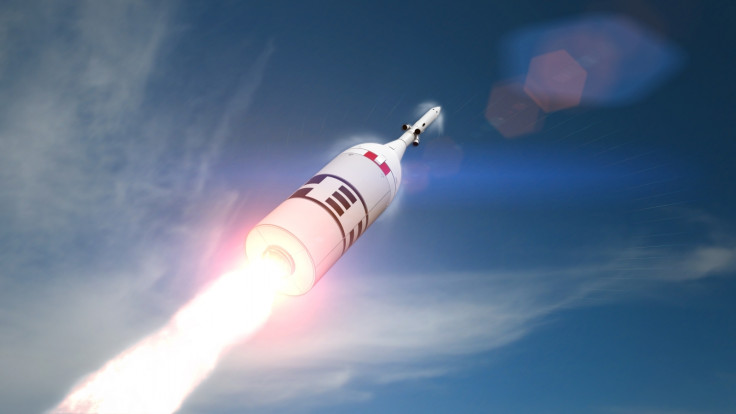Here's how Nasa plans to save astronauts' lives if its massive rocket carrying Orion capsule explodes
Nasa's SLS rocket will launch 4 astronauts on the Orion Multi-Purpose Crew Vehicle for missions to Mars and beyond.

Nasa's next big rocket -- the Space Launch System (SLS) -- would launch into the orbit no earlier than December 2019. The agency is currently working towards that first uncrewed flight, but the ultimate mission of the colossal rocket, which will stand taller than the Statue of Liberty, is to launch four astronauts on the Orion Multi-Purpose Crew Vehicle (Orion MPCV) for missions to Mars and beyond.
As much as it sounds interesting to see a group of spacefarers going into deep space on a giant rocket capable of producing a combined thrust of 8.8 million pounds, it is also not hard to imagine how catastrophic the failure of a launch like this could be -- something that could end up with a massive explosion.
Though crewed flights won't happen anytime before 2023, Nasa is already working on the system that would save the lives of the astronauts and take them to safety – in case the need arises.
Launch Abort System
Dubbed Launch Abort System, or LAS, the safety mechanism would take Orion's crew module and the astronauts inside away from the launch vehicle. The whole thing mainly features two parts: the fairing assembly or the shell that would protect the capsule from heat, wind, and other elements of the abort environment and the launch abort tower, which uses three motors – the launch abort, attitude control and jettison - to take the crew to safety.
That said, in case of an emergency during ascent, the rocket-powered abort motor would fire, serving as a mini rocket and producing enough thrust to pull the crew module away from the rocket.
Once the launch-abort motor will pull the crew capsule higher, the attitude control motor will reorient LAS following which the jettison motor will fire, ejecting module safely from the system.
Testing of LAS
The functionality of the said system will be explored during a full-stress test in April 2019. In this test, a rocket, built by Orbital ATK, will carry a 22,000 pound Orion test vehicle – with same design features and mass as the capsule for crew – and fully functional LAS up to an altitude of 32,000-ft at speeds going beyond 1,000 miles per hour. After reaching the required height, the abort motor will come into play, taking the test vehicle far from the booster.
Nasa will pay close attention to the amount of time the vehicle will take to fly away during the whole test, as the separation time has to match with the amount of time the actual Orion spacecraft will have to get away to safety.
It is worth noting that the falling capsule will not deploy parachutes during this test, but in the actual scenario, the capsule will deploy a parachute to land the crew safely back on Earth.
"This will be the only time we test a fully active launch abort system during ascent before we fly crew, so verifying that it works as predicted, in the event of an emergency, is a critical step before we put astronauts on board," said Don Reed, manager of the Orion Program's Flight Test Management Office at Nasa's Johnson Space Center in Houston.
"No matter what approach you take, having to move a 22,000-pound spacecraft away quickly from a catastrophic event, like a potential rocket failure, is extremely challenging."





















